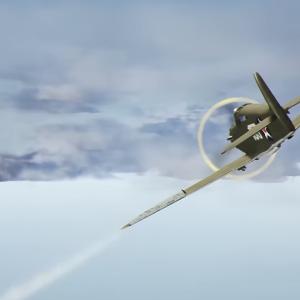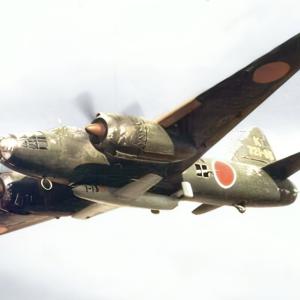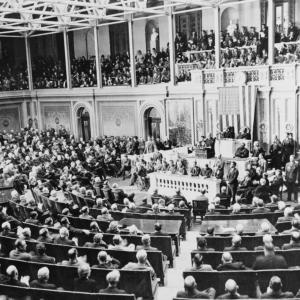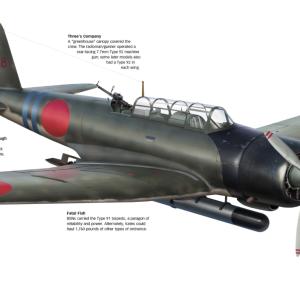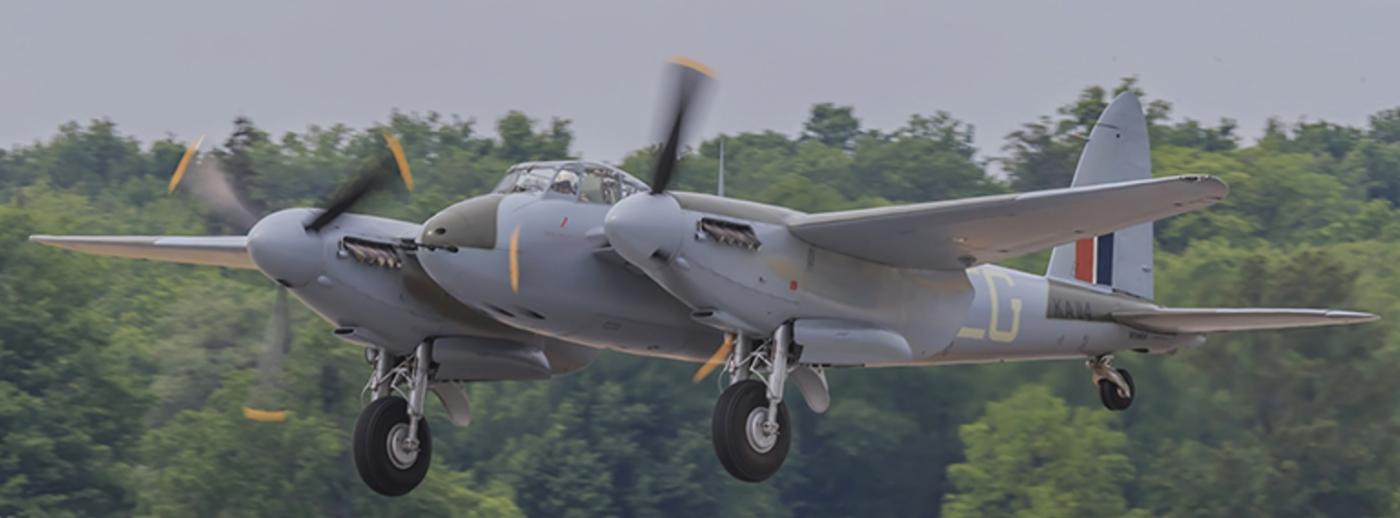
De Havilland Mosquito
The De Havilland Mosquito, often nicknamed “The Wooden Wonder,” was a British multi-role combat aircraft developed during World War II. It was designed by Ronald E. Bishop, the chief designer at the De Havilland Aircraft Company, which was based in Hatfield, Hertfordshire, England.
The idea behind the Mosquito was highly unconventional for the time. Most of the British Air Ministry’s aircraft preferences leaned toward heavy, metal, heavily-armed bombers and fighters. In contrast, De Havilland proposed something radically different—a high-speed, unarmed bomber made mostly of wood. The concept was that speed alone would protect the aircraft, making it fast enough to outrun enemy fighters rather than fight them off. Initially, this idea was met with skepticism. But with persistent advocacy from Bishop and company founder Geoffrey de Havilland, and with Britain facing wartime shortages of strategic metals like aluminum, the proposal gained traction. The abundance of wood and skilled woodworkers in the UK, along with the pressing need for versatile aircraft, helped seal the deal for the Mosquito’s development. A prototype was greenlit in 1940, and the aircraft was brought to life soon after.
One of the most groundbreaking aspects of the Mosquito was its wooden construction. While nearly every other frontline aircraft at the time was made of aluminum, the Mosquito was crafted primarily from a sandwich of balsa wood between birch plywood sheets. The result was a lightweight but robust airframe that could be produced in non-traditional aircraft facilities, like furniture factories. This not only preserved valuable metal for other military uses but also expanded the production capabilities across the UK and other Commonwealth countries.
The fuselage was designed as a smooth, aerodynamic monocoque—made in two longitudinal halves and then bonded together. The wings, also wooden, were equally innovative in their simplicity and strength. This construction technique contributed to the Mosquito's ability to fly faster than many contemporary fighters, despite being larger and carrying heavy payloads.
For power, the Mosquito relied on a pair of Rolls-Royce Merlin V12 engines—the same engines used in the iconic Spitfire and Lancaster. The engines varied slightly across different Mosquito variants, but in general, they delivered top-tier performance. With these powerful engines and its light structure, the Mosquito could reach speeds over 400 mph (640 km/h), making it one of the fastest operational aircraft of the war. This speed and range gave it an incredible advantage in many roles.
Initially designed as a fast, light bomber, the Mosquito was meant to strike strategic targets deep in enemy territory without the need for fighter escort or defensive gunners. Its designers believed it could avoid enemy aircraft altogether simply by flying higher and faster than anything the Axis powers had at the time. And they were right. The early bomber variants, like the Mosquito B Mk IV, were capable of carrying up to 4,000 pounds of bombs and were operational by 1942. They were used in raids on enemy infrastructure, cities, and military installations across occupied Europe.
But the Mosquito's utility extended far beyond its original bombing role. Its wooden frame made it harder to detect by radar, which gave it a natural edge in reconnaissance. Special photo-reconnaissance versions, stripped of armament and equipped with high-resolution cameras, flew deep into enemy airspace, gathering vital intelligence that shaped Allied strategy. Other versions were adapted as night-fighters, equipped with radar and armed with cannons and machine guns to intercept enemy bombers and later, even V-1 flying bombs.
The Mosquito was also used as a pathfinder, marking targets with flares for larger bomber groups, and even in electronic warfare—jamming German radar and communications during major bombing raids. It played a critical role in anti-shipping operations as well, carrying rockets and torpedoes to strike German naval vessels. The aircraft’s speed, range, and flexibility made it a reliable tool in virtually any theater of war.
Its operational history includes some of the most daring and precise missions of the war. One of the most famous was the 1943 raid on Amiens Prison in France, where Mosquitos blew open prison walls to help French Resistance prisoners escape. Other Mosquito units were assigned to attack Gestapo headquarters in occupied cities, disrupt V-weapon launch sites, and chase down German night-fighters in the skies above Europe. Its ability to perform daylight raids without massive escort or losses changed the way military planners viewed air power.
Over 40 distinct versions of the Mosquito were produced, with more than 7,700 units built between 1940 and 1950. It served with not only the Royal Air Force, but also the Royal Canadian Air Force, the USAAF, and other Allied air forces. It remained in service after the war, with some air forces continuing to use it well into the 1950s.
The legacy of the De Havilland Mosquito lies not only in its combat performance but also in the innovative thinking that led to its creation. It was a gamble that paid off massively—proof that radical ideas, when executed with precision and passion, can succeed even in the most conservative environments. The Mosquito’s success also helped shift post-war design philosophies toward faster, more agile aircraft rather than just bigger and more heavily armed ones.
Today, only a handful of Mosquitos remain, and even fewer are airworthy. Restorations are ongoing around the world, often involving meticulous woodwork and original parts. The surviving examples are celebrated at air shows and museums as reminders of the ingenuity and bravery that defined the aircraft and its crews.

